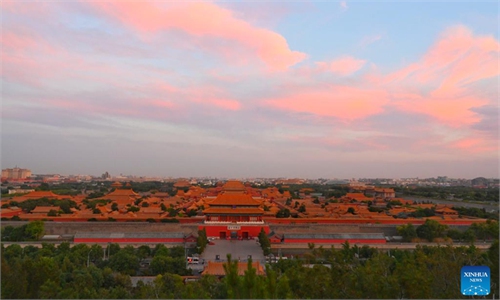ARTS / CULTURE & LEISURE
Earliest drainage system unearthed reveals water management from 4,000 years ago

Pingliangtai Ancient City site Photo: VCG
Archaeological research at the Pingliangtai Ancient City site in Henan Province has unveiled that a previously discovered ceramic drainage system dating back approximately 4,000 years may be an early case of collective prehistoric water management established in the face of an environmental crisis, according to a recent paper.
Led by Associate Professor Zhang Hai from Peking University's School of Archaeology and Museology and Associate Professor Zhuang Yijie from University College London, the collaborative research was published on Monday in the prestigious scientific journal Nature Water, a publication under the Springer Nature banner.
Located in Huaiyang county, the Pingliangtai Ancient City site, discovered in 1980, is the earliest and most complete prehistoric site in China. Most importantly, it was a pioneer in urban construction planning in prehistoric times. In 2020, archaeologists found a number of pottery drain pipes, which were connected by drainage channels in an orderly manner. These are considered the earliest and most complete urban drainage system in China.
The ceramic water pipes unearthed from this site were all straight tubes 35 to 45 centimeters in length. They all had similar decorations on their surface, which shows that the drainage system of the entire city was uniformly planned and jointly completed by various social groups, according to a report by the Xinhua News Agency.
Zhuang Yijie, the senior and corresponding author on the paper, said that the discovery of this ceramic water pipe network is "remarkable" because it shows that the people of Pingliangtai were able to build and maintain this advanced water management system with stone-age tools and without the organization of a central power structure. This system would have required a significant level of community-wide planning and coordination, and it was all done "communally," according to a report by the phys.org media outlet.
Situated in the central plains of China, the Pingliangtai Ancient City site grappled with a temperate monsoonal climate characterized by volatile temperature and precipitation fluctuations. Although water was readily available due to its flood-prone location, the site faced the constant threat of climate uncertainties.
To mitigate the problem of excessive water during the rainy seasons, a dual-tier drainage system was constructed at the site, with ceramic drainage pipes dating to 4,100-3,900 years ago, according to the paper. Another parallel system of drainage canals extended to a communal drainage area, both of which underwent multiple rounds of maintenance and reconstruction.
The water channels surrounding individual homes appeared to be constructed and maintained mainly at a family level, while the ceramic drainage pipes and canals in public spaces required planning and collaboration. This setup suggests a lack of social stratification within the site.
This study stands as a compelling example showcasing the interplay between environmental change, technological advancement in construction, and societal organization, all culminating in a social cooperation governance water management model, providing an alternative perspective for comprehending the genesis of water-based societies in East Asia's monsoonal region and the evolution of social power dynamics, according to media reports.



